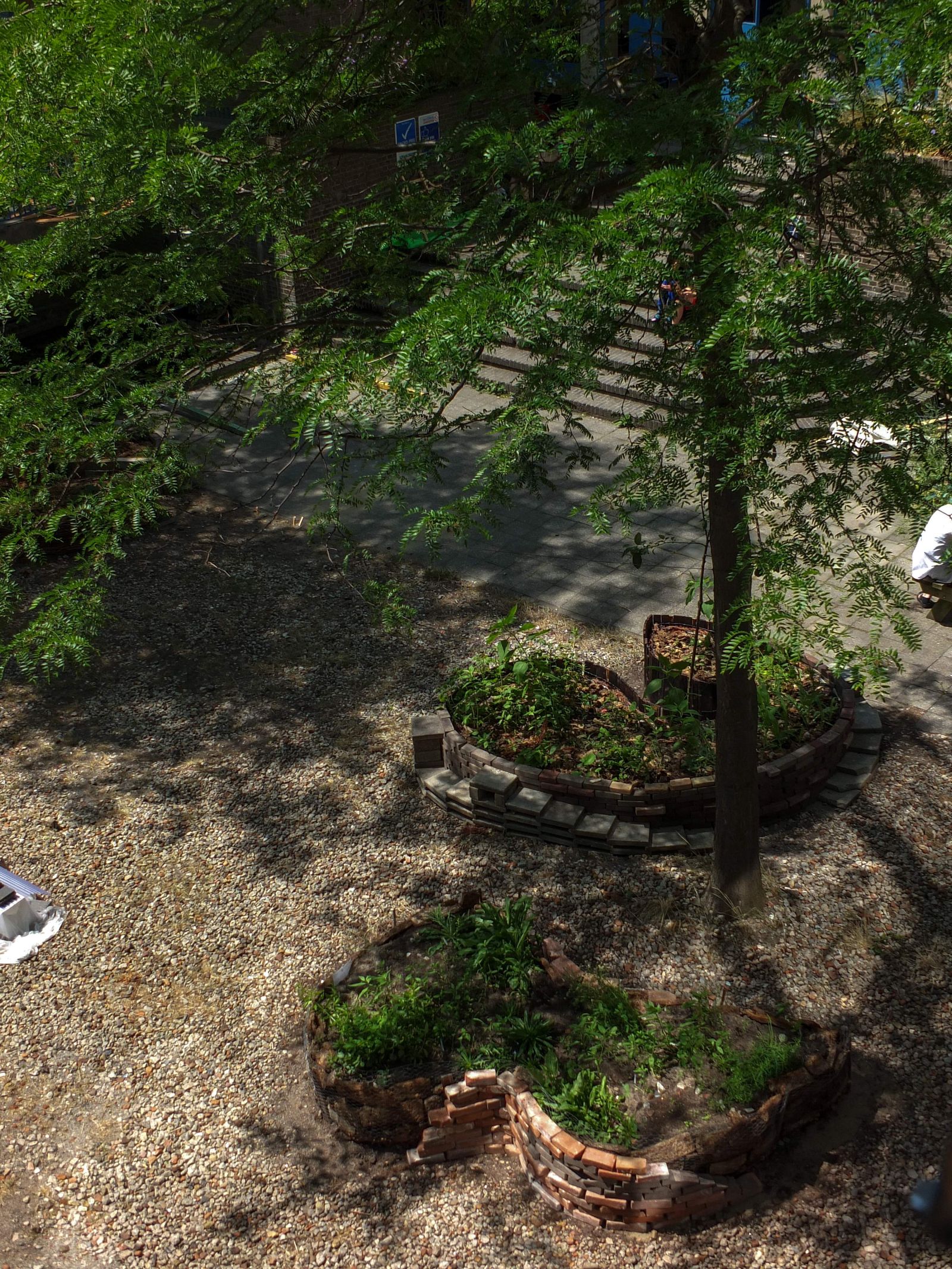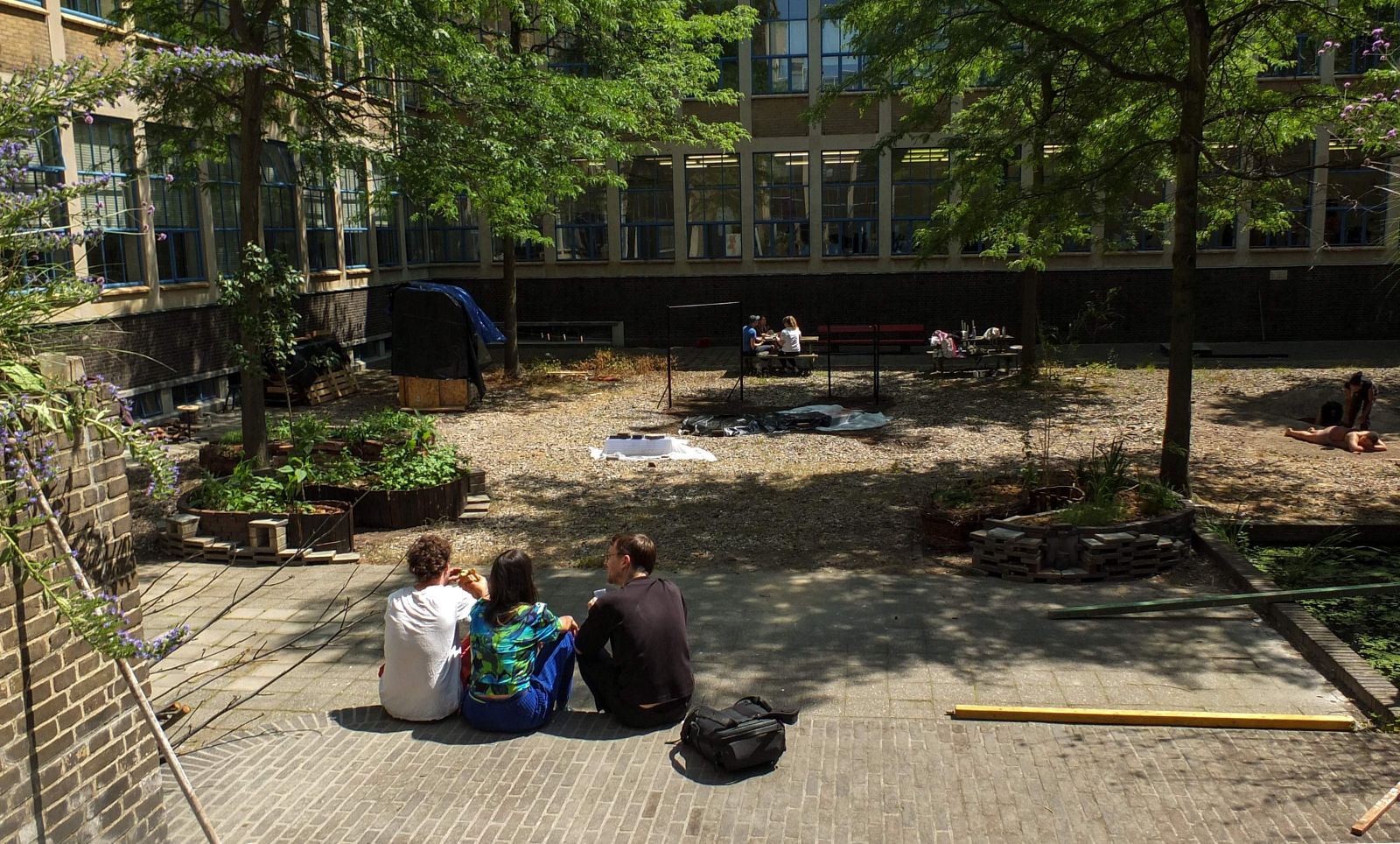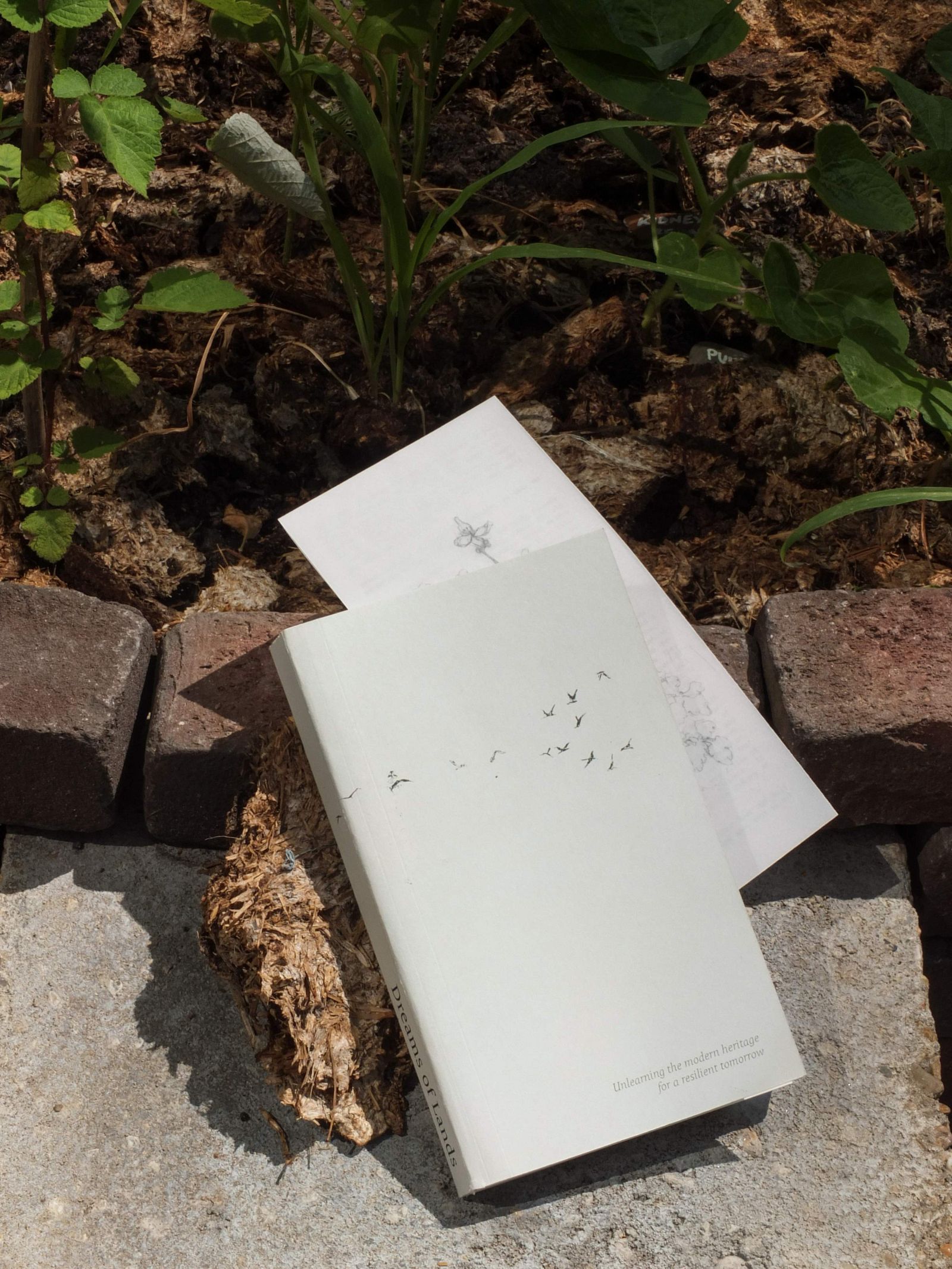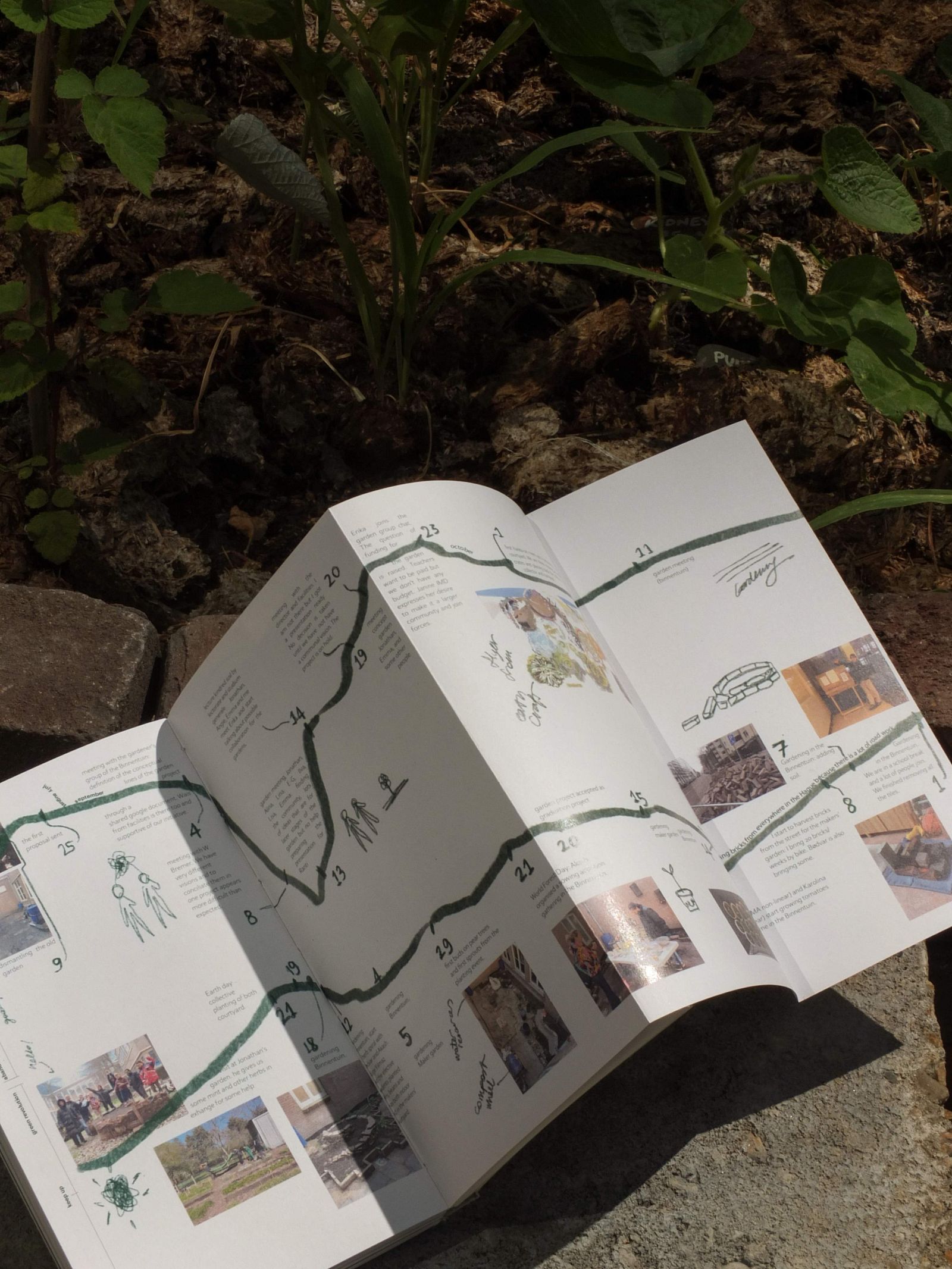
The Greater Celandine does not live to shine. In the discarded roadsides and polluted lands, she tirelessly grows from seed to flower year after year. Humbly, she offers her four petals’ flowers to bees and her seeds to ants. When you break her stem, she releases a bright orange latex, used to heal warts and other skin conditions.
Nobody notices the Greater Celandine; we were no exception to the rule.
The Prinsessegracht courtyard of the Royal Academy of Art of The Hague is internally famous for its bareness. A rectangle of a hundred square meters that seven trees evenly divide. There is no soil. The ‘bottom’ is filled with stones, apparently rubble from another building, sand, then more stones. A root-proof polyester textile ends to define what is a monument and what is not. We wanted to do something with that wasted space: regenerate its potential to host life, make it a space to experiment with organic materials, an ecological classroom, or just a nicer space to be in. As a creative community, we were so excited by the potential of the area that we forgot to ask the residents what they wanted.
The courtyard was not empty. There were seven trees, two dead pigeons, some ants, a lot of stones and a growing population of Celandines, mosses and their other invisible plant fellows. Those working behind the scenes are called the pioneering generation. Because they require so little nutrients to grow, they can quickly invade an empty site. Over the years of growing and dying, they will have built a good soil for more demanding, sturdy and perennial plants to grow, which over time will evolve in an ecologically stable community.
The modern human coloniser works hand in hand with the plant pioneer. As he goes on invading and clearing already populated areas, he extracts most of their resources to transform them into deserts and covers fertile lands with thick layers of stones, tar or concrete that only pioneer plants thrive on. Unfortunately, the modern human does not know that they are partners. He often thinks very little of them, gets scared and calls them “invaders,” to finally destroy them in favour of the company of rocks.
Fortunately, the Greater Celandine does not hold grudges and keeps on treating the wart that is our courtyard.





